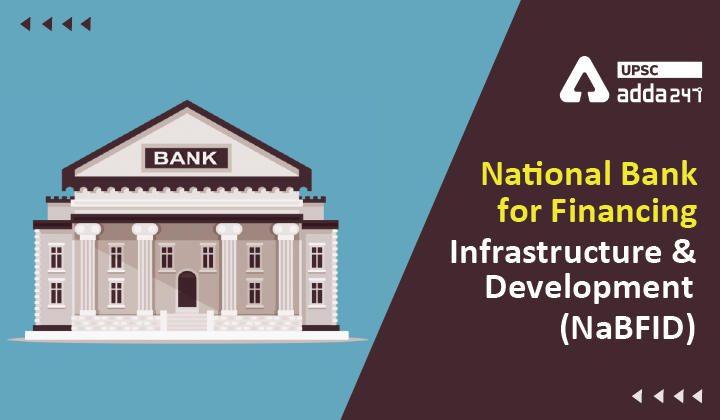Table of Contents
NaBFID: Relevance
- GS 3: Indian Economy and issues relating to planning, mobilization, of resources, growth, development and employment.
NaBFID: Context
- Recently, RBI said that NaBFID will be regulated and supervised as an All India Financial Institution (AIFI) under the Reserve Bank of India Act, 1934.
NaBFID: Key points
- The National Bank for Financing Infrastructure and Development (NaBFID) Act, 2021, was passed in March 2021 and it came into force in April 2021.
- It becomes the fifth AIFI after EXIM Bank, NABARD, NHB and SIDBI.
What is NaBFID?
- The National Bank for Financing Infrastructure and Development (NBFID) is set up as the principal development financial institution (DFIs) for infrastructure financing.
- NBFID is set up as a corporate body with authorised share capital of one lakh crore rupees.
- Shares of NBFID may be held by entities like central government, multilateral institutions, sovereign wealth funds, banks and any other institution prescribed by the central government.
- Initially, the central government will own 100% shares of the institution which may subsequently be reduced up to 26%.
What is DFI?
- DFIs are set up to provide long-term finance for such segments of the economy where the risks involved are beyond the acceptable limits of commercial banks and other ordinary financial institutions.
- DFIs, unlike banks, do not accept deposits from people.
- Source of funds: market, government, as well as multi-lateral institutions.
नेशनल बैंक फॉर फाइनेंसिंग इंफ्रास्ट्रक्चर एंड डेवलपमेंट (एनएबीएफआईडी)
NaBFID functions
NBFID will have both financial as well as developmental objectives.
Financial objectives
- To directly or indirectly lend, invest, or attract investments for infrastructure projects located entirely or partly in India.
- Central government will prescribe the sectors to be covered under the infrastructure domain.
Developmental objectives
- Facilitating the development of the market for bonds, loans, and derivatives for infrastructure financing.
Other functions
- Extending loans and advances for infrastructure projects,
- taking over or refinancing such existing loans,
- attracting investment from private sector investors and institutional investors for infrastructure projects,
- organising and facilitating foreign participation in infrastructure projects,
- facilitating negotiations with various government authorities for dispute resolution in the field of infrastructure financing, and
- providing consultancy services in infrastructure financing.
NaBFID source of funds
NBFID may raise money in the form of
- loans or otherwise both in Indian rupees and foreign currencies, or
- securing money by the issue and sale of various financial instruments including bonds and debentures.
- Borrowings from central government, Reserve Bank of India (RBI), scheduled commercial banks, mutual funds, and multilateral institutions such as World Bank and Asian Development Bank.
What is AIFI?
- All India Financial Institutions (AIFI) is a group composed of financial regulatory bodies that play a pivotal role in the financial markets.
- The financial institutions assist in the proper allocation of resources, sourcing from businesses that have a surplus and distributing to others who have deficits.
- The financial institutions act as an intermediary between borrowers and final lenders, providing safety and liquidity.
Read current affairs for UPSC





 TSPSC Group 1 Question Paper 2024, Downl...
TSPSC Group 1 Question Paper 2024, Downl...
 TSPSC Group 1 Answer key 2024 Out, Downl...
TSPSC Group 1 Answer key 2024 Out, Downl...
 UPSC Prelims 2024 Question Paper, Downlo...
UPSC Prelims 2024 Question Paper, Downlo...




